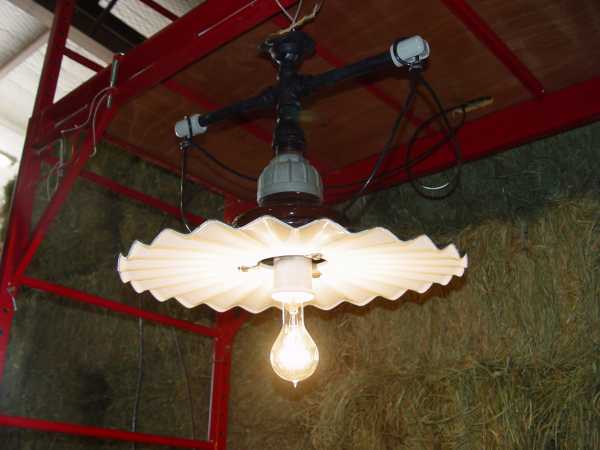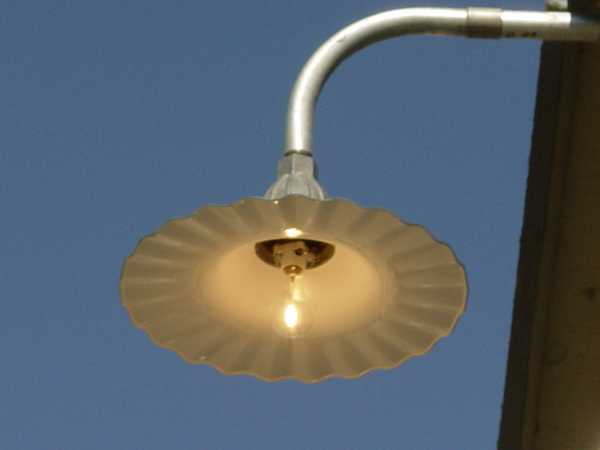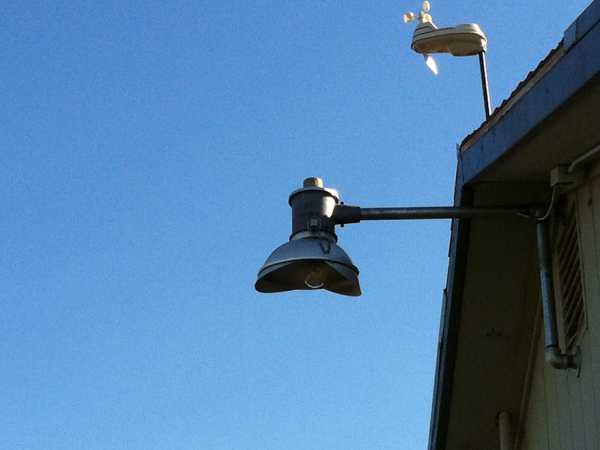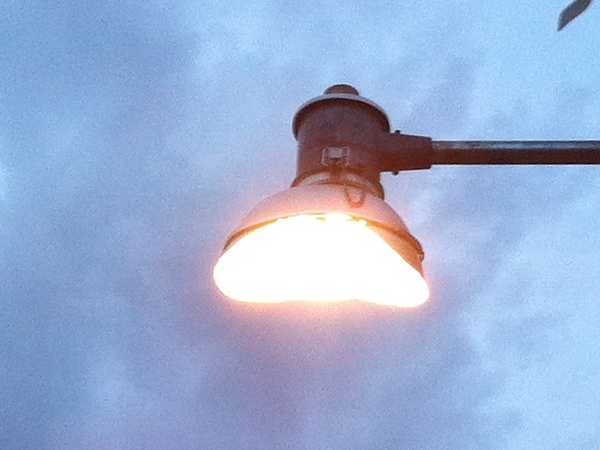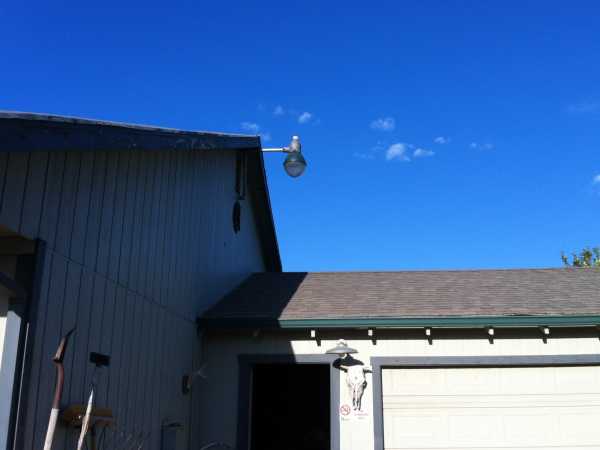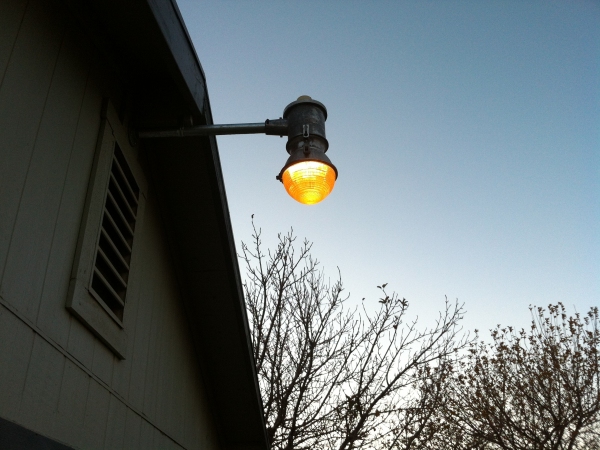Concepts for repurposing
|
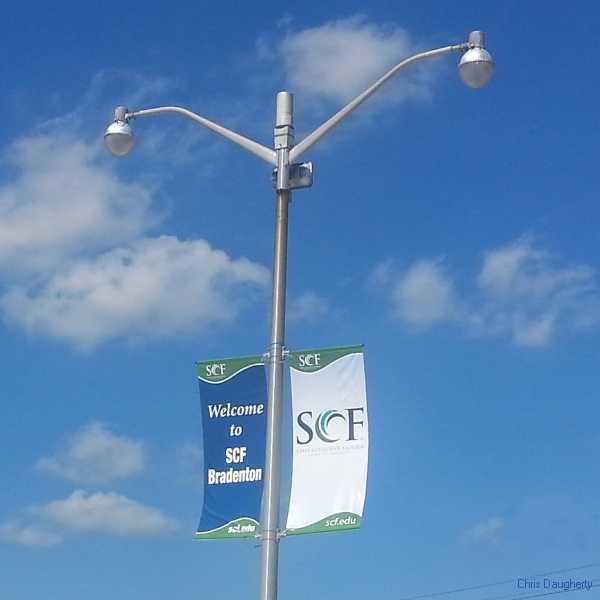
|
|
Please note:
This feature is a continuation from Part One in which the context of this discussion is explained. |
| Optical Considerations |
|
Oftentimes we acquire vintage street lights as a result of luck and opportunity. Nonetheless it is still useful to better understand the purposes of various optical designs in order to make the best use of the lighting equipment that we obtain.
There are two general categories of overhead street lamps, reflector type and diffused optic type. Reflector Lamps Reflector lamps are open type luminaires that have some form of reflector in order to both redirect light to a desired area and to limit light that may stray toward undesirable directions. The most common type reflectors are radial wave and side output. (The side output lamps are often called "Admiral's hats" or "crescent moons.") Both were originally designed to use clear incandescent bulbs, however many were modified to use 100 watt mercury vapor lamps while still in street service, and they can be equipped with weatherproof encapsulated CFL or LED type retrofit lamps. Radial wave reflectors, as their name implies, are stamped with waves that tend to reflect light horizontally.
There is a third type of radial wave reflector known as the asymmetrical radial wave. These reflectors have portions bent down at the factory to limit light output in specific directions. Asymmetrical radial wave reflectors came in a variety of bent shapes and are extremely rare finds. |
flat radial wave reflector.
|
Domed type radial wave reflector.
|
A GE with domed radial wave reflector and LED "antique" bulb for safety and accent lighting.
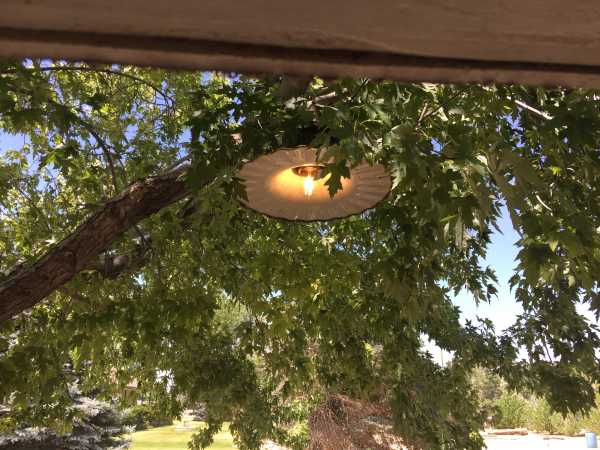
| Side output reflectors, also known as crescent moon or "Admiral's hat" reflectors, are oval in shape. Most come equipped with deflectors at each end to cut off any direct light from shining directly in front of and in back of the luminaire, producing a look of a crescent moon. The idea here is to illuminate a street while minimizing the amount of light that may be directed at nearby buildings. |
"Crescent moon" side output luminaire.
|
Illuminated view.
|
| For dusk to dawn applications these luminaires will function well when equipped with weatherproof CFL or LED retrofits. For "momentary use" installations (turned on only during the completion of short-term tasks such as feeding the stock when it is dark outside) my personal preference is to use original 200 watt or 300 watt incandescent lamps to make the installations look more original. With open reflector lamps, any incandescent lamps used must be weather resistant to prevent breakage if hit by snow or raindrops when lit. |
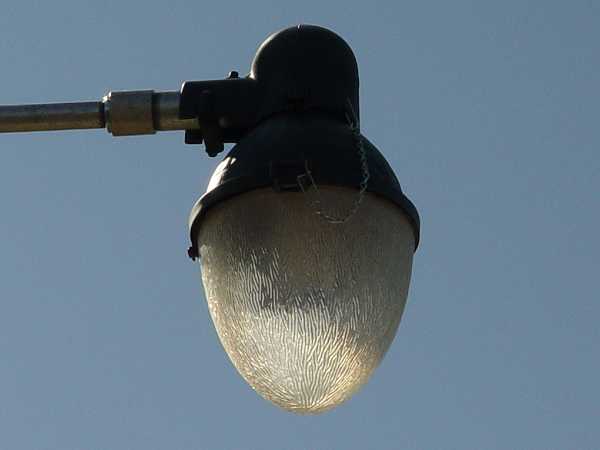
| Diffused and Refractor Optics |
|
Most vintage street lights that can still be found come with some form of glass optics (globes) that either diffuse or refract the light produced in the lamp.
Diffused globes typically involve glass that has a ripple pattern on the inside. This design softens the light being produced, reducing glare, and tends to produce a relatively uniform pattern of illumination. Polished deflectors may be present inside the reflector portion of the optical assembly that serve to help reduce light output in undesired directions and concentrate more light in other directions. Refractor globes involve glass that contains precisely engineered prisms on the inside. In these globes the prisms concentrate light in specific directions. These globes typically have markings embossed in the glass indicating in which direction(s) the light is concentrated. Most of the more common globes are described in the old catalogs as spheres, cups or teardrops, depending upon the manufacturer. In modern lexicon, the relatively round globe and reflector assemblies are known as "gumballs" while the more elongated units are referred to as "teardrops." |
Pendant optics. Left and center, prismatic refractor type. Right, ripple glass diffuser type.
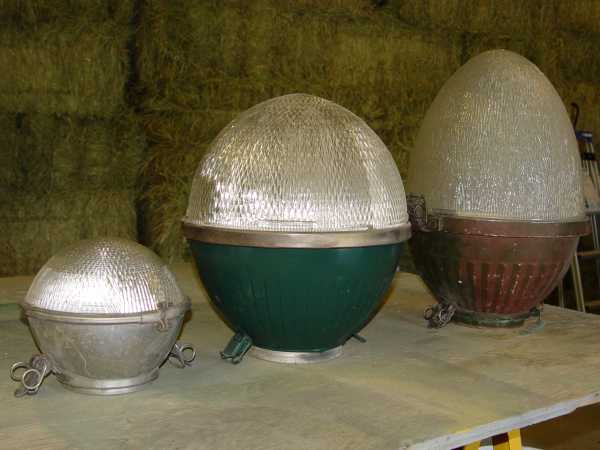
Shadow of a deflector in a diffuser type teardrop.
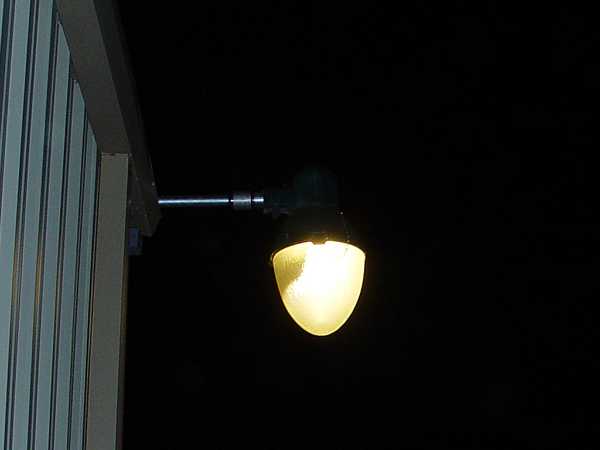
| Since the late 1920s Holophane has produced a dual prismatic refracting unit that actually consists of two globes, one having horizontal prisms and the other having vertical prisms. One globe fits tightly inside the other. Known as the "wide spread," The light pattern produced can be increased or decreased based on how the lamb bulb is positioned in the luminaire. A sighting mark is used to position the bulb socket inside the fixture. |
1928 trade ad for Holophane's dual prismatic "Wide Spread" luminaire.
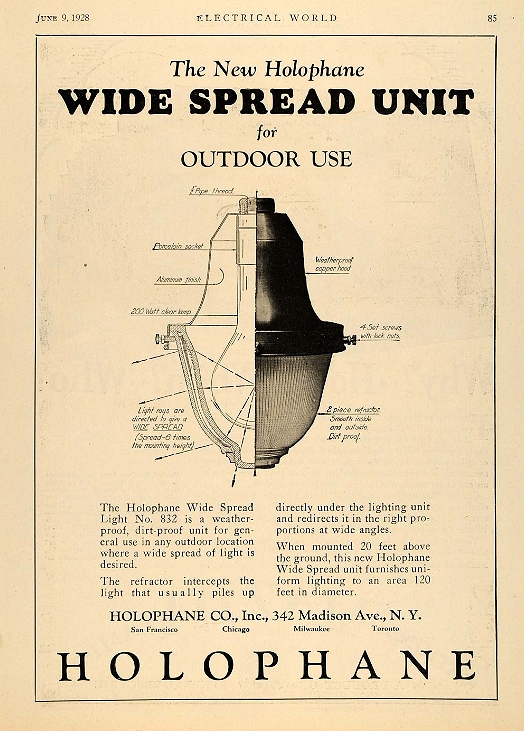
Holophane's dual prismatic "Wide Spread" luminaire in use.
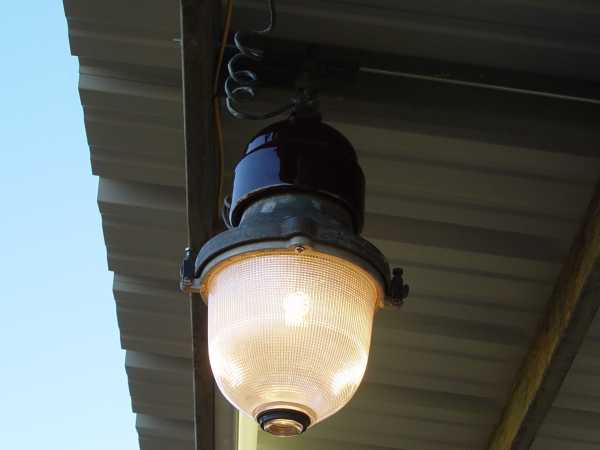
| The shapes of reflectors and refractors can both influence how light is concentrated in various directions as well as whether the spread is wide or narrow. Having a sense of what light distribution will be produced by a particular luminaire is an important consideration when deciding where to use it and how to mount it. |
GE Form 79CR has a much narrower light distribution.
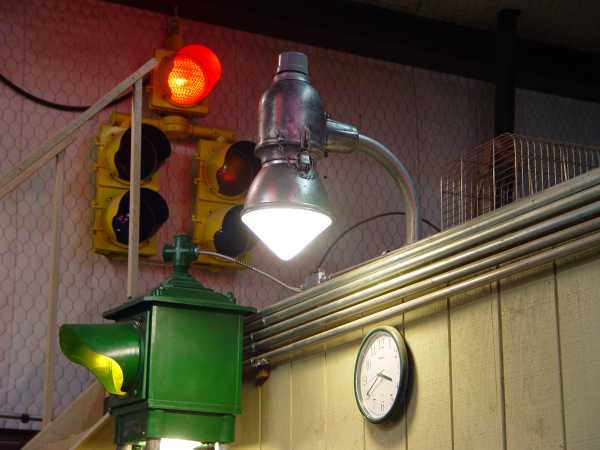
Some of GE's vintage luminaire designs.
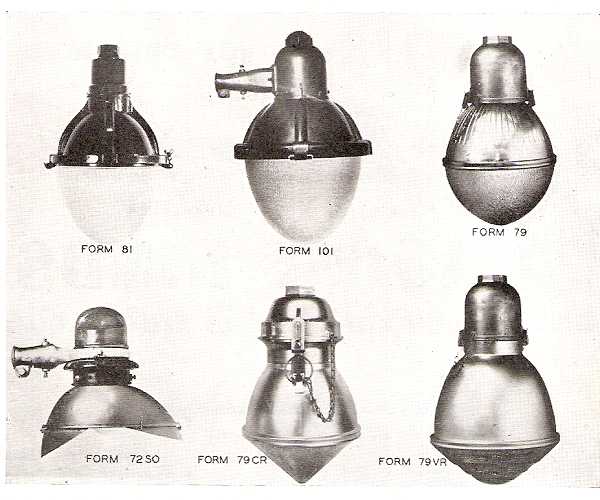
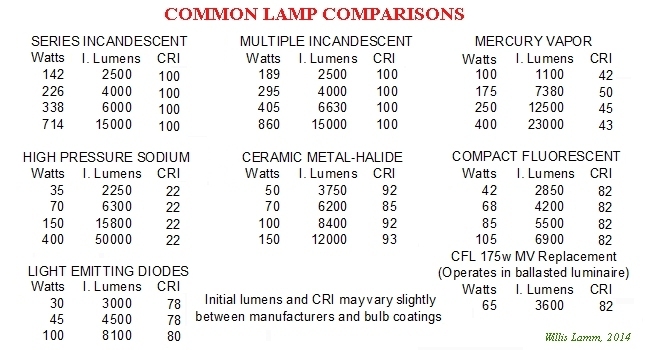
| While CFL and LED lamps will permit higher intensity light sources to be used in many of the smaller luminaires without creating overheating concerns, you will generally get the most useful light for the amount of electricity used when larger, higher intensity optics and lamps are mounted at higher elevations while the smaller, lower intensity fixtures are more efficient when mounted closer to the ground. |
For 24 foot mounting height,
|
For 12 foot mounting,
|
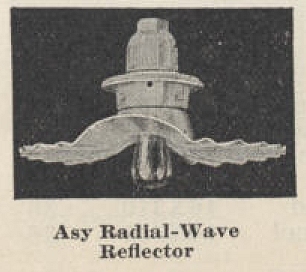 Radial wave luminaires most commonly come in two configurations, flat and domed. Flat radial waves provide the greatest horizontal light output however in doing so they do produce the most glare. Domed radial waves (where the reflector forms a dome where it attaches to the luminaire head) concentrate more light in a somewhat smaller area and produce less glare.
Radial wave luminaires most commonly come in two configurations, flat and domed. Flat radial waves provide the greatest horizontal light output however in doing so they do produce the most glare. Domed radial waves (where the reflector forms a dome where it attaches to the luminaire head) concentrate more light in a somewhat smaller area and produce less glare.
